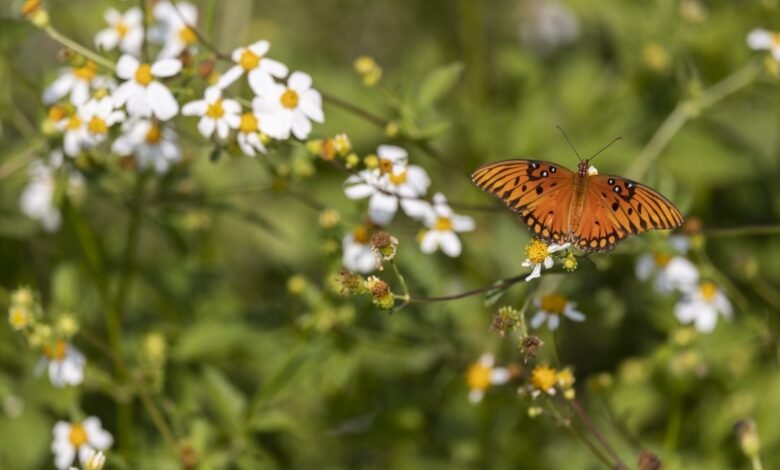The Gumshoe Plant: Amazing Benefits and How to Grow It at Home

The gumshoe plant is a wild plant that many people don’t know much about. Even though it can sting like a scorpion, the gumshoe plant has a lot of health benefits that might surprise you. This plant grows in hilly areas and is used by local people for medicine.
In this blog, we’ll talk about how you can grow the gumshoe in your garden and how it helps with health problems. From keeping you warm in winter to helping with sprains, this plant has a lot to offer if used carefully!
What is the Gumshoe Plant?
The gumshoe plant is a wild plant that mostly grows in forests and hilly areas. It has green leaves covered with tiny thorns that cause itching and pain when touched. This plant is known for its sting, which can feel like a scorpion bite, and this is why people call it the “scorpion plant.”
But did you know that despite its scary sting, the gumshoe has been used by hill people for many years as medicine? It’s rich in iron and vitamin C, which are both great for our bodies.
How to Grow Gumshoe Plant at Home
Even though the gumshoe plant is wild, it can be grown at home with proper care. Here are some tips to help you grow it in your garden:
- Direct sunlight: The gumshoe can handle strong sunlight, but it’s best to place it in a spot where it gets 1-3 hours of sun daily.
- Soil: This plant can grow in almost any type of soil, even sand. However, using draining soil can help it grow better.
- Pot: Since the gumshoe plant is a creeper, you don’t need a special pot. A small pot of about 2 inches will work well. Growing it in a garden is ideal because it needs less care.
- Watering: The gumshoe plant doesn’t need daily watering. You can water it once a week, but make sure the soil doesn’t dry out completely.
Benefits of the Gumshoe Plant
Despite being wild and painful to touch, the gumshoe has many health benefits:
- Treats sprains: The leaves of the gumshoe plant can be crushed and applied to sprains to heal them quickly.
- Bone health: A paste made from the plant’s leaves helps with bone problems and injuries.
- Warms the body: In colder areas, people eat the gumshoe as a vegetable, especially during winter, to keep their bodies warm.
- Purifies the blood: Eating the plant as a vegetable can help clean the blood.
- Rich in iron and vitamin C: These nutrients are great for preventing anaemia and fatigue.
Can You Eat the Gumshoe Plant?
Yes, the gumshoe plant can be eaten, but it’s not easy to prepare. The leaves are used to make a vegetable dish, but because of its painful thorns, people use special tools like nettles to handle the plant safely. In hilly regions, locals have learned how to cook this plant without getting hurt, and they enjoy it with traditional foods like chilladu and bhatura.
This plant’s vegetables are not only tasty but also have health benefits. Eating it during winter helps keep people warm and energetic.
Caring for the Gumshoe Plant: What You Need to Know
If you decide to grow the gumshoe in your garden, there are a few things to keep in mind:
- Protect from excess sun: While the plant loves sunlight, too much can burn its leaves. Make sure it gets just a few hours of direct sun.
- Avoid overwatering: The gumshoe doesn’t like soggy soil. Water it only when the soil starts to dry out.
- Handle with care: Always wear gloves when touching the plant to avoid its painful sting.
Where is the Gumshoe Plant Used?
The gumshoe plant has been used for centuries in hilly areas for its medicinal properties. Here are a few ways it’s used:
- Sprain relief: A paste made from the leaves helps with sprains.
- Bone health: Hill people use the plant to treat bone injuries.
- Warmth in winter: People eat the plant during winter to stay warm.
Is It Safe to Keep the Gumshoe Plant at Home?
While the gumshoe has many benefits, it’s not a good idea to keep it inside your house, especially if you have children. The plant’s tiny thorns can be dangerous, causing severe itching and pain if touched. It’s best to grow it outside in a garden where it’s safe from children and pets.
Conclusion
The gumshoe plant may look wild and dangerous, but it is a valuable plant with many health benefits. From treating sprains to keeping you warm in winter, this plant has been helping people for generations. While it may not be easy to grow or handle due to its painful thorns, the rewards are worth it. By learning how to care for and respect the gumshoe , you can take advantage of its unique benefits while keeping yourself safe.



